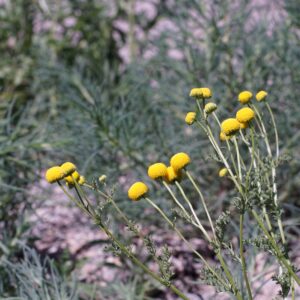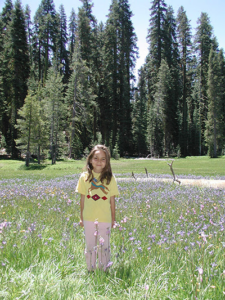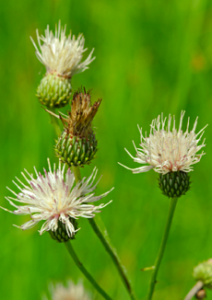Conservation News Archive
October 2024
Organ Mountains - Desert Peaks Management Comments
The Native Plant Society submitted comments on the proposed management options for the Organ Mountains -Desert Peaks National Monument. The Forest Service proposed four options. The Society favored an option that promotes more plant conservation by putting sensitive areas off limits from livestock grazing and off-road vehicle use. The letter can be viewed at https://www.npsnm.org/wp-content/uploads/2024/07/NPSNM-BLM-Organ-Mts-comments.pdf
Support for Mimbres Peaks National Monument
The Las Cruces chapter and the State NPSNM have written letters of support for creation of the Mimbres Peaks National Monument. Mimbres Peaks include many rare plant and animal species and culturally important sites that deserve special protection.
Weakening the Wilderness Act
Utah Senator Mike Lee has proposed a bill that would open Wilderness Areas to mountain bikers, strollers and game carts. The International Mountain Bicyclers Association is opposed to the bill, although there is much disagreement among the mountain biking community. The Senator says that because bikes were not expressly prohibited in the Wilderness Act, they should be allowed even though the Act states that “There shall be…no other form of mechanical transport….”. Opponents of the bill feel this could open Wilderness Areas to a whole host of other uses, or even if limited to mountain bikes, could lead to further degradation along trails and creation of new trails.
Forest Service Prescribed Burn Plans
At the request of Congresswoman Teresa Leger Fernadez (3rd District, NM), The Government Accounting Office (GAO) investigated the Forest Service Prescribed Burn protocols and released its report recently (https://www.gao.gov/products/gao-24-106239). The report found that some escaped prescribed burns did not use weather forecasts specific to the sites, had insufficient trained staff and resources available, and the plan sometimes used the wrong type of vegetation or did not consider drought impacts. The Forest Service has started implementing improvements as it foresees the need for continued prescribed burns in the face of climate change and human impacts on landscapes.
Native Plant Day and Native Plant Month
Consider using New Mexico Native Plant Day (the third Saturday of August) and Native Plant Month (April) to host a field trip or other activity or to write an editorial on the importance of native plants for your local newspaper. Each year the Native Plant Society of New Mexico requests a Native Plant Day proclamation and supports the Native Plant Month resolution submitted to the state legislature.
July, 2024

Photo by Andrew Tree
Stinknet found in New Mexico
In April, Gila chapter member and wildflower photographer Andrew Tree found the first occurrence of the invasive plant stinknet, Oncosiphon pilulifer, in New Mexico near Lordsburg. Stinknet, also called globe chamomile, was introduced from South Africa and it has been proliferating in Arizona, California, Nevada, and Mexico. It is a winter annual in the Asteraceae, blooming in early spring. It can form dense populations that particularly threaten other native spring-flowering plants, and the dried vegetation is a fire hazard in summer. Some people have an allergic reaction when handling the plant.
After confirming identification of the plant, Andrew returned to the site, pulled up the plant and it is now being pressed for the herbarium at WNMU. Thank you to Andrew for helping to keep this plant out of New Mexico! If you think you have found an invasive plant new to the state or to your region, you can report it to your local Agricultural Extension agent and send a voucher specimen to your regional herbarium. NMSU is working to hire a new Noxious Weeds coordinator for the state as of May. For more information on stinknet, visit https://extension.arizona.edu/stinknet-invasion.
New BLM Public Lands Rule
The Bureau of Land Management finalized a rule recognizing conservation as an equally important use of public lands. Among other things, the new rule allows for restoration and mitigation leases. NPSNM joined the Colorado and Arizona native plant societies in commenting on the proposed rule and requesting that non-profits receiving restoration leases be exempted from the fees associated with other types of leases. The final rule states, “Recognizing that restoration lessees are providing a service to the public and the BLM, the rule provides for waiving or reducing the rent of a restoration lease if a valuable benefit is being provided to the public and revenue is not being generated.” The new rule provides a mechanism for better land management practices on BLM lands. Read more about the new rule at https://www.doi.gov/pressreleases/biden-harris-administration-finalizes-strategy-guide-balanced-management-conservation
Sandoval County BLM Land Protected
The Bureau of Land Management has protected 4000 acres of land in southern Sandoval County near Placitas from mineral development for the next 50 years. The land includes the Buffalo Tract and Crest of Montezuma. These areas provide important habitat for plants and animals and contain sacred cultural sites. https://www.doi.gov/pressreleases/secretary-haaland-protects-sacred-sensitive-lands-new-mexico
October, 2021
Proposed Repeal of Alaska Roadless Rule Provides Hope for the Tongass National Forest
The U.S. Department of Agriculture (USDA) today announced it is taking steps to repeal the 2020 Alaska Roadless Rule and restore protections to more than nine million acres of inventoried roadless areas on the Tongass National Forest. The Alaska Roadless Rule, approved on Oct. 29, 2020, exempted the Tongass from the 2001 Roadless Rule, which prohibited road construction, reconstruction, and timber harvest in inventoried roadless areas – with limited exceptions.
A proposed rule repealing the 2020 rule has been published for public comment.
USDA determined that the underlying goals and purposes of the 2001 Roadless Rule continue to be a critical part of conserving the resources of the Tongass, especially when it comes to the values that roadless areas represent for local communities, Alaska Natives, and the economy of Southeast Alaska. The decision to repeal the 2020 Alaska Roadless Rule is based on the multiple ecologic, social, cultural and economic values supported by roadless areas on the Tongass. More than 95% of commenters opposed exempting the Tongass from the 2001 Roadless Rule during the public comment periods leading up to the 2020 Alaska Roadless Rule.
“Restoring the Tongass’ roadless protections supports the advancement of economic, ecologic and cultural sustainability in Southeast Alaska in a manner that is guided by local voices,” said Agriculture Secretary Tom Vilsack. “The proposed rule is considerate of Alaska’s Tribal Nations, community input, and builds on the region’s economic drivers of tourism and fishing.”
A 60-day comment period begins Nov. 23, 2021 with the publication of a proposal to repeal the 2020 Alaska Roadless Rule. Comments can be submitted in the following ways:
- Preferred: Submit electronically using the Federal eRulemaking Portal: https://www.
regulations.gov/document/FS- 2021-0007-0006 - Mail to: Alaska Roadless Rule, USDA Forest Service, P.O. Box 21628, Juneau, Alaska 99802–1628
- Hand Delivery / Courier to: Alaska Roadless Rule, USDA Forest Service, 709 W. 9th Street, Juneau, Alaska 99802
- Email:sm.fs.akrdlessrule@
usda.gov
Comments are encouraged on the proposed rule. Comments, including names and addresses, are placed in the official record and are available for public inspection and copying. The public may inspect comments received at www.regulations.gov.
At 16.7 million acres, the Tongass National Forest is the largest national forest in the country and represents the largest intact tract of coastal temperate rainforest on earth. The forest is within the traditional homelands of the Tlingit, Haida, and Tsimshian peoples, holds more biomass per acre than any other rainforest in the world and stores more carbon than any other national forest.

Wild and Scenic: new designation proposed for the Gila River
U.S. senators Martin Heinrich and Ben Ray Luján have reintroduced previously overturned legislation that, if passed, would prevent federally-funded construction projects from obstructing free-flowing river segments along the Gila, San Francisco, and east fork of the Mimbres rivers. The legislation comes at an opportune time for water, habitat, and culture conservation — the Gila is the state’s last free-flowing river and feeds into the drying Colorado River basin watershed; the Gila achieved the top spot as the most endangered river in the country in the face of damming and diversion projects; and the new law would protect ancient indigenous sites while ensuring that populations downstream today will continue to have water supply.
Read more in the NM Political Report

One-Third of the World's Tree Species Are Endangered
A massive five-year study conducted by the Global Tree Assessment (GTA) has revealed that of our planet's 58,497 tree species, 17,500 — 30 percent — are at risk of extinction. While this number may seem grim, the study sheds light on where tree conservation has been successful, and where immediate work needs to be directed in order to systematically and efficiently slow loss of critically endangered species (including destruction of habitat from deforestation — see below!).
Read more on the Smithsonian National Museum of Natural History Plant Press
Explore the Botanic Gardens Conservation International (BCGI) GlobalTree Portal

Tropical Mountain Forests in Africa Store 150 Tons of Carbon Per Hectare -- and we can expect to lose 500,000 hectares to deforestation by 2030
Not only do African montane forests provide valuable habitat for endangered flora and fauna and support healthy watersheds for humans, animals, and soils downstream, a new study reinforces just how important the trees themselves are to the overall health of the planet. The 72,000 trees surveyed reveal that, compared to higher-elevation forests on other continents, the African forests store much more carbon — 169% more — than previously thought. And they’re disappearing at an increasingly rapid rate, meaning that conservation efforts will be all the more vital in the coming decade.
Read more on Plant Press
July, 2021
Historic Donation of Land Enlarges Sabinoso Wilderness
A Movement to Protect the Pecos
Community members from the Pecos Valley are petitioning the New Mexico Water Quality Control Commission (WQCC) to consider an Outstanding National Resource Water (ONRW) designation for the Upper Pecos Watershed. ONRW, or Outstanding Waters, as they are often referred to, are rivers, streams, lakes, and wetlands that receive special protections to preserve water quality and ensure future generations of New Mexicans have access to clean water. Sens. Martin Heinrich and Ben Ray Lujan and Rep. Teresa Leger Fernandez have submitted a letter to the WQCC urging it to consider the ONRW petition.
Native Plant Society of New Mexico — why do we care?
- This area exhibits the tremendous biodiversity of the Southern Rockies, including the endangered Holy Ghost Ipomopsis wildflower (Ipomopsis sancti-spiritus).
- The modern local community prospers as a center of outdoor recreation, known for clean water, abundant wildlife and scenic vistas.
- These are ancestral lands of pueblo people.
- Taxpayers usually wind up footing the bill for cleanup of mining pollution.
See more information here, including the full petition: https://ournmwaters.com/protecting-the-pecos-river/
The “Dirty Water Rule” of 2020 Under Scrutiny
Remember WOTUS? In 2020, after years of engagement with states, the public, tribal governments, and other stakeholders, the last administration issued a revised definition of the Waters Of The United States that were protected under the Clean Water Act. It excluded most of New Mexico’s waters from federal regulation. A broad array of stakeholders nationwide—including states, Tribes, local governments, scientists, and non-governmental organizations—are seeing destructive impacts to critical water bodies under the 2020 rule. “After reviewing the Navigable Waters Protection Rule as directed by President Biden, the EPA and Department of the Army have determined that this rule is leading to significant environmental degradation,” said EPA Administrator Michael S. Regan.
Read the full EPA news release here: https://www.epa.gov/newsreleases/epa-army-announce-intent-revise-definition-wotus
The Xerces Society Santa Fe Office Offers New Pollinator Plant Lists
The Xerces Society, famously looking out for “the little things that run the world” (invertebrates), has now established an office in Santa Fe and has developed a flowering plant list for landscapes in central and northern New Mexico as part of its “Bring Back the Pollinators” campaign. The species are widely adaptable and arranged by flowering season to provide forage as continuously as possible.
Check it out and learn more here: https://xerces.org/publications/plant-lists/pollinator-plants-albuquerque-and-santa-fe-region
The State of Maine Passes Restrictions on Pollinator-Killing Pesticides
This year, the state of Maine passed the country’s strongest restrictions on the bee-killing pesticides called neonicotinoids or neonics. These long-lasting substances make every part of the treated plant, including pollen and nectar, neurotoxic. New Mexico is home to at least four times as many native bee species as is Maine, and their disappearance is big trouble for the flowering plants they service. Let’s get onboard the movement to control the flagrant use of neonics.
Read more about the measure in Maine at: https://environmentmaine.org/news/mee/maine-governor-signs-bill-save-bees
April 5, 2021
New Mexico is Keeping the Gila Wild

The Senate has UNANIMOUSLY designated April as National Native Plant Month!
April 2, 2021

Photo courtesy of Native Plant Conservation Campaign
On March 25, the U.S. Senate unanimously adopted a resolution (S. 109) declaring April as National Native Plant Month.
October, 2020

Mesilla Valley Rio Grande Habitats Spared in October, 2020
This scene, but with less water, could have been reenacted in the Las Cruces – Mesilla reach of the Rio Grande just as migrating birds were seeking food and respite, and after years of riverbank restoration efforts.
Off-road vehicle enthusiasts across the West had been invited to descend on the area, chosen for this year’s “River Run” events. The Las Cruces chapter teamed up with the Southwest Environmental Center (SWEC) and Mesilla Valley Audubon Society, sending a well-crafted opposition letter to the International Boundary and Water Commission (IBWC), which has jurisdiction over the riverbed, and to numerous state and regional officials. Read the original letter here.
Numerous individual members of our organizations and local authorities followed suit. SWEC reports the outcome in the press release that follows.
10/14/20 Update: SWEC has learned that a massive off-road vehicle rally planned for the bed of the Rio Grande on consecutive Saturdays (10/10/20 and 10/17/20) has been cancelled, at least for this year. The organizers were apparently unable to obtain the necessary permits in time from the U.S. International Boundary and Water Commission. Thanks to all of you who contacted IBWC and other officials to voice your opposition to this event.
ESA Listing and Critical Habitat Proposed for Rare Marsh Plant Found Only in New Mexico

Photo by Bob Sivinski
Following a rigorous review of the best available science, today the U.S. Fish and Wildlife Service announced a proposal to list the striking, 8-foot-tall Wright’s marsh thistle (Cirsium wrightii) as threatened under the Endangered Species Act. (ed., Some would say, “It’s about time!”)
Public comment until November 30 online at regulations.gov, citing docket number FWS–R2–ES–2018–0071.
See the complete explanation of the proposal here: FWS Proposal
“Here Today, Gone Forever: Plant Extinction Now and Conservation Strategies for Tomorrow“.
You might be interested in an online symposium hosted by the New York Botanical Gardens entitled This symposium is free and will be held on two Tuesdays: November 17 & 24, 11 a.m.– 12:30 p.m. EST. Registration is free. See agenda through the link below.
Click here to view the video recording of the first day of proceedings, Plant Extinction, Part I.
Click here to view the video recording of the second day of proceedings, Plant Extinction, Part II.
Setting World Records of Plant Ranges through Citizen  Science:
Science:
(Message from Brian Buma at the University of Colorado, Denver) Through a collaboration with iNaturalist, National Geographic, and ESRI, I want to let you know about a cool opportunity to get into the exploration scene. A new website allows you to explore the northernmost and southernmost plant occurrence records for any species on the continent – and then go break them. The idea is people can explore the edges of life (similar to our recent paper in Ecography on the world’s southernmost tree) nearby. It’s a great activity for education or just exploring. The records are limited to research-grade observations on iNaturalist with <1000m of location uncertainty, so many will be fairly easy to beat, at least initially.
Check it out! It’s a great way to add some purpose to a hike or assignment to give to high school or college kids.
Link: https://storymaps.arcgis.com/stories/29c6ac1c2f4e4f93beabba73a42ac7b1





